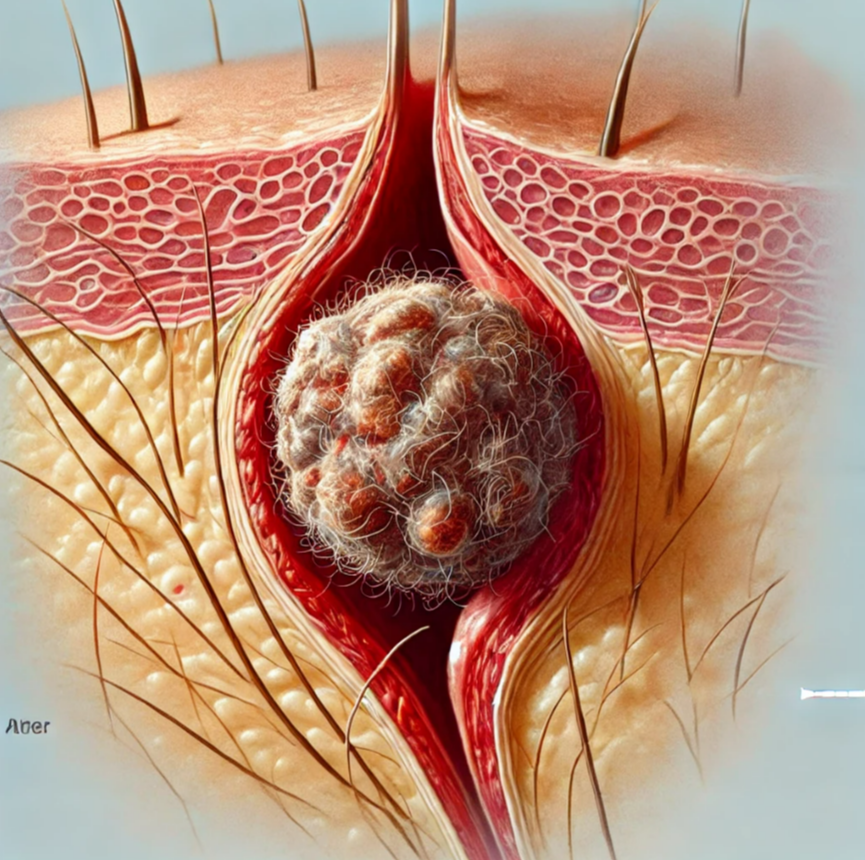
Pilonidal cysts are a painful condition that often affects the area near the tailbone, causing discomfort and sometimes requiring medical intervention. While some cases may resolve without surgery, more severe instances may demand treatment. If you’re curious about topics like pilonidal cyst surgery recovery pictures, the cost of procedures, or how to manage this condition, this blog will cover all aspects of pilonidal cysts and their treatment options, including long-term solutions.
What is a Pilonidal Cyst?
A pilonidal cyst forms when hair becomes embedded under the skin, usually at the cleft of the buttocks. These cysts can become infected, leading to pain, swelling, and sometimes drainage of pus. In certain cases, patients wonder, “does pilonidal cyst go away on its own?” While smaller, uninfected cysts might drain by themselves, larger cysts often require medical attention.
Treatment Options for Pilonidal Cysts
Non-Surgical Treatments
For milder cases, non-surgical options like laser hair removal pilonidal cyst treatments are becoming popular. This method reduces the recurrence of cysts by targeting the root cause — hair growth. By using laser technology to remove hair in the affected area, the chances of ingrown hairs that trigger the cysts are minimized.
Sometimes, a pilonidal cyst drained by itself may occur naturally, where the cyst bursts, releasing its contents. While this can offer temporary relief, it’s not a permanent solution. Proper medical care is needed to ensure it doesn’t recur.
Pilonidal Cyst Laser Surgery
If you are dealing with frequent flare-ups or have a chronic condition, you might be considering pilonidal cyst laser surgery. Laser surgery is a less invasive method that promotes faster recovery and leaves minimal scarring compared to traditional surgery. Although this procedure is relatively new, it has shown promising results for many patients.
Surgical Treatments and Procedures
For more severe cases, surgery may be required. One option is the pilonidal cyst cleft lift procedure, which aims to flatten the cleft and prevent hair from becoming trapped. This method is known for a higher success rate and lower recurrence rate compared to other surgical techniques.
During surgery, the healthcare provider will excise the cyst, and you might want to know the CPT code for excision of pilonidal cyst, which is typically 11770. Meanwhile, the ICD 10 code for pilonidal cyst is L05.91, which is crucial for insurance and medical records.
After surgery, some patients are curious about pilonidal cyst surgery recovery pictures to get a sense of how the healing process will look. While every case is unique, scars generally improve with time. In fact, there are cases where the pilonidal cyst surgery scar healed so well that it’s barely visible.
Cost and Insurance
One of the most common concerns is the pilonidal cyst surgery cost. This can vary depending on the location, healthcare provider, and complexity of the surgery. On average, the cost can range from $1,000 to $3,000 in the U.S. It’s essential to check with your insurance provider for coverage details, as having the correct ICD 10 for pilonidal cyst can ensure your procedure is billed correctly.
After Surgery: Recovery and Recurrence
After surgery, patients often worry about recurrence. “Do pilonidal cysts come back?” While there’s always a risk of recurrence, proper care, including keeping the area clean, reducing hair growth with methods like laser hair removal pilonidal cyst, and following post-surgical instructions, can help minimize the chances.
In rare cases, a pilonidal cyst draining by itself might indicate incomplete healing or infection. It’s essential to consult a healthcare professional if this occurs, as recurring drainage could lead to complications.
Can a Pilonidal Cyst Burst on Its Own?
Yes, a pilonidal cyst burst on its own can happen, especially if it becomes infected and fills with pus. While this can relieve some pressure, it’s not a permanent solution, and surgical intervention or thorough drainage may be necessary to fully resolve the issue.
Conclusion
If you’ve been diagnosed with a pilonidal cyst, whether mild or severe, understanding your treatment options is vital. From non-surgical methods like laser hair removal pilonidal cyst treatments to more involved procedures like the pilonidal cyst cleft lift, there’s a range of possibilities depending on the severity of your condition. While some cysts may drain or pilonidal cyst burst on its own, medical advice is critical to ensure complete recovery and prevent recurrence.
Whether you’re planning for surgery or exploring non-invasive treatments, it’s important to stay informed. Always consult your doctor for the best course of action and ensure you’re aware of important factors like the CPT code for excision of pilonidal cyst, insurance coverage, and recovery expectations.
